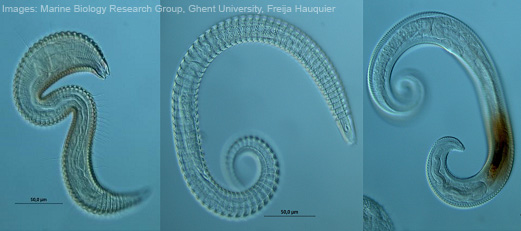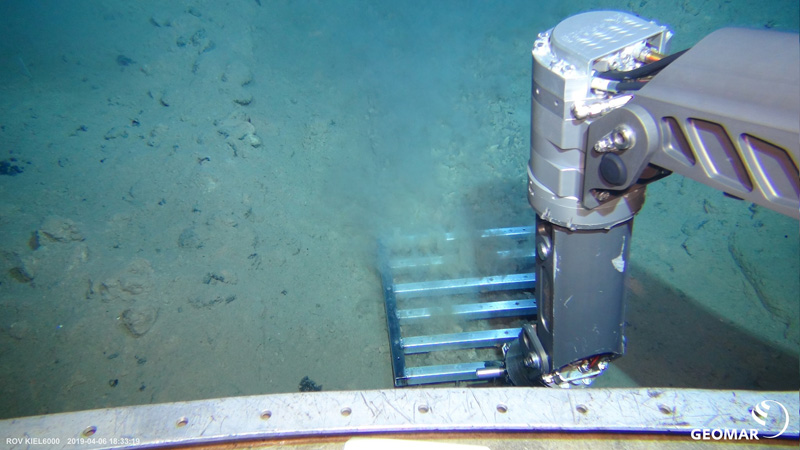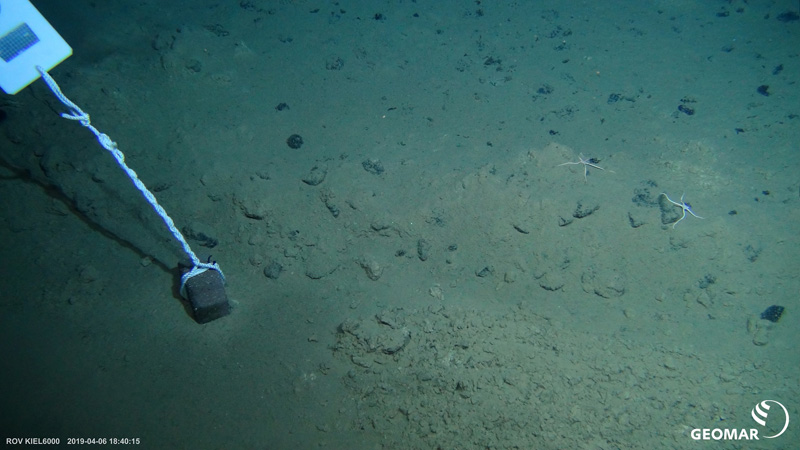by Dr. Freija Hauquier, Ghent University
Underneath the seafloor lies an entire world of small animals crawling between the sediment grains, well hidden from the human eye at first glimpse. Yet they are numerous, diverse, and equally deserve our attention in the context of deep-sea mining. Sure, studying them requires a bit more patience than when looking at the beautiful megafauna creatures on the ROV or OFOS images, but it’s all worth the effort. Underneath the microscope in our home laboratory at Ghent University, we finally get to look at our animals and appreciate their beauty. Although they are very small (generally less than 500µm long), the meiofauna size class of animals contains quite a variety of life forms, all different in morphology and belonging to different phyla. The most numerous phylum within this size group of animals are the roundworms or Nematoda (Fig. 1) and they are our preferred study organisms at the Marine Biology Research Group in Ghent.

Being small also means that traveling around in deep-sea sediments is not easy, even more so when you don’t have legs or other appendages to help you. Therefore, our small nematodes usually show a lot of turnover, even at very small spatial scales (assemblages at 1m distance may look very different already). This also implies that whenever a change in their environment happens, such as in a mining impact situation, they are not able to escape or relocate fast enough so these changes are reflected in their numbers, diversity and community structure. This makes them ideal study objects for the assessment of environmental impact within the JPIO MiningImpactII project. One of the envisioned effects to the deep seafloor communities when mining operations start will be the compaction of the sediment by the vehicle. From previous studies we know that this compaction also entails that the sediment geochemistry changes and that these changes are detrimental for the meiofauna. Combined with their inability to disperse over larger distances, this makes them especially vulnerable. Most communities require several years to decades to recover from an impact that could be comparable to that from a mining vehicle. One of our aims is therefore to look for ways in which we could speed up this recovery process, by applying a very basic and simple idea: loosening the sediment again after the passing of the vehicle, by scraping the topmost layer with a rake (as you would do in your garden in springtime to aerate the bottom). To this end, we put out some experimental test patches with the help of the ROV KIEL 6000 in the German contract area of the CCZ. We deployed a rake by means of the ROV arm (Fig. 2.1) which was dragged over a few meters inside an older epibenthic sledge track (since this contains compacted sediment). The next step was to collect sediment samples from within and just outside these loosened seafloor strips and compare their nematode communities. We counted again on ROV KIEL 6000 for this sampling by means of pushcores. Hopefully, we will be able to revisit the same sediment stretches again in future expeditions, so that we can have a time series of samples to tell the complete story on nematode community recovery after sediment decompaction.


